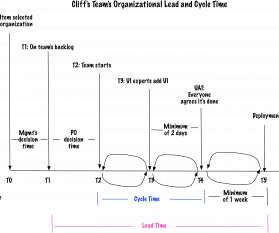Aging Fun with Drunk Agile (Video)
Johanna Rothman
NOVEMBER 19, 2021
Daniel Vacanti and Prateek Singh graciously invited* me to be on an episode of Drunk Agile: Episode 37 Johanna Rothman Part Deux More Bigger Aging. Ordering the work by value, even though agile approaches hope the value changes. (Re)defining That's why agile approaches emphasize “finish something and get feedback on it.”












Let's personalize your content